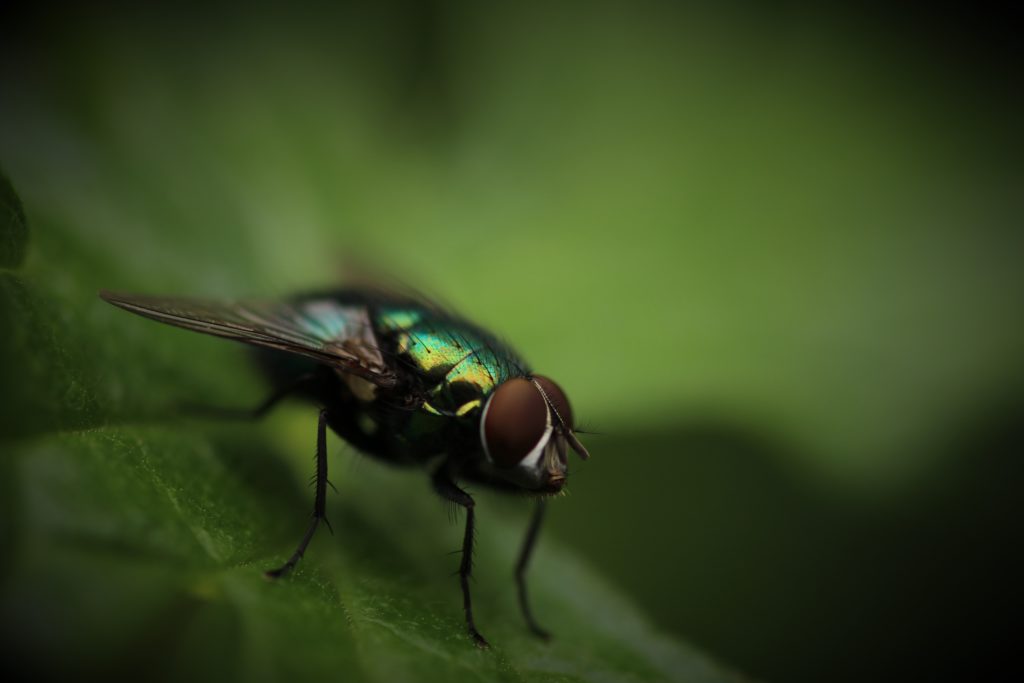Time moves more slowly if you’re a fly
According to research, an animal’s perception of time depends on how quickly it can process sensory information. Flies process information more than 4 times faster than humans at 250 frames per second, compared to humans at 60. This means movements and events – including an incoming fly swat – happen more slowly for a fly, giving it ample time to escape!
Flies reproduce…really fast!
Female house flies can lay up to 500 eggs during their life span (up to a month). In ideal conditions, those eggs can hatch and grow to adult flies in less than 10 days, so general fly problems can grow into really big fly problems very quickly!
House flies exist on a liquid diet
Flies don’t have the mouthparts to chew their food, so instead they have to drink it!
…So why are flies on my food?
Flies regurgitate their digestive juices onto your food, breaking it down until they can drink it through their proboscis.
They also taste with their feet
Before a fly decides to regurgitate its digestive juices onto your sandwich, it can decide whether it likes the taste. Taste receptors located on their lower legs allow flies to determine whether its edible or not, which is why you will often see flies walking around on a food source. The good news is, flies need to land to taste their food – one of the reasons fly traps are so effective!
Flies leave droppings…everywhere!
Due to their liquid diet and basic digestive system, food passes through extremely quickly. This means that flies excrete incredibly often – almost every time they land! Adding this to the bacteria flies carry on their legs and bodies – it’s easy to see why it’s best to not let them land on your food!
Flies are known to spread a range of diseases
As you can tell, flies can be pretty unhygienic as they collect bacteria while feeding and breeding, then spread them as they land on our food, in our kitchen or on our bodies. Flies are commonly associated with spreading harmful bacteria including salmonella and E.coli, and they are strongly suspected of transmitting at least 65 diseases to humans, including typhoid fever, dysentery, cholera, poliomyelitis, yaws, anthrax, tularaemia, leprosy and tuberculosis.

